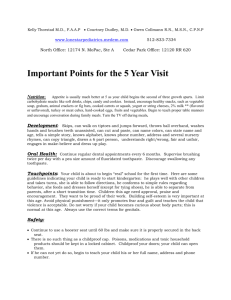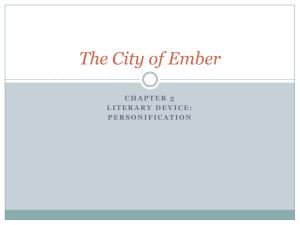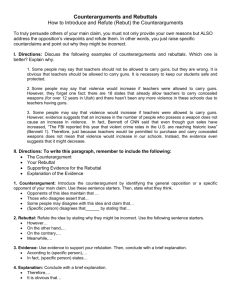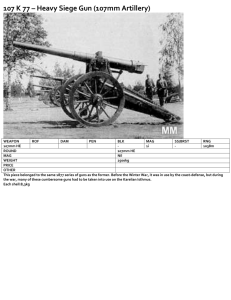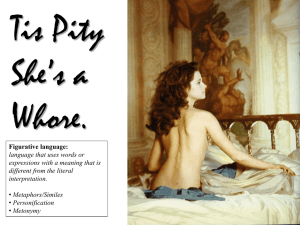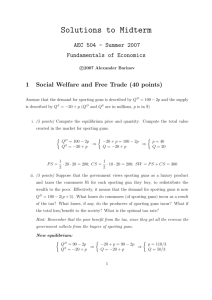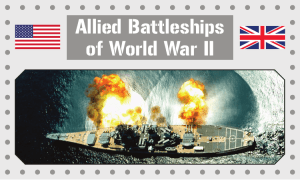The Last Laugh
advertisement
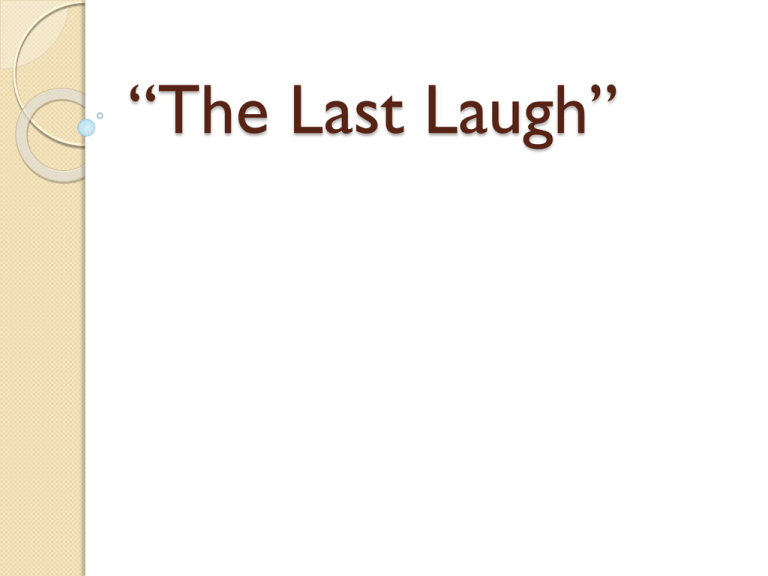
“The Last Laugh” Vocabulary--definitions Guffawed: noisy, crude laugh Lofty: great height, noble Tittered: a laugh that is quiet Vainly: to lack an effect Rabbles: a mob, disorderly group Languid: lacking energy Hooted: loud sounds—normally disapproval The Story Analysis Form: Purpose: Tone: Characters: Setting: Title: The title of the poem comes from the old saying, “He who laughs last, laughs best.” In war time it is death that has the last laugh—or more specifically the instruments of war, guns. It is a three-stanza poem that captures the final moment in the death of three men on the battlefield. 'Oh! Jesus Christ! I'm hit,' he said; and died. Whether he vainly cursed or prayed indeed, The Bullets chirped-In vain, vain, vain! Machine-guns chuckled,-Tut-tut! Tut-tut! And the Big Gun guffawed. Translation: doesn’t matter Technique: Interjection/Blasphemous outcry Effect: Connotes extreme passion/surprise Technique: contrast The exclamations contrast the simplicity of “he said.” Effect: diminishes the personality of the speaker. Who is to blame? The guns or the soldiers firing them? if he actually did curse or pray—it was in vain as he is dead Technique: Personification of the guns Effect: the guns themselves seem to be mocking the dead—insensitive to humanity. Technique: onomatopoeia Effect: creates the sound of the battlefield for the readers and continues the personification. Another sighed,-'O Mother, -Mother, - Dad!' Then smiled at nothing, childlike, being dead. And the lofty Shrapnel-cloud Leisurely gestured,-Fool! And the splinters spat, and tittered. Technique: Interjection/Childish outcry Effect: Connotes extreme passion/surprise Technique: separation/pause (grammar) Effect: the pause before and exclamation after adds emphasis—both the leisurely nature of the cry and the message. Technique: Personification of the guns Effect: the guns themselves seem to be mocking the dead—insensitive to humanity. Translation: Once again, cries in vain as he dies immediately after. Technique: word choice “childlike” Effect: mimics the childish nature of his cries and reinforces the imagery of young soldiers dying. Technique: onomatopoeia Effect: creates the sound of the battlefield for the readers and continues the personification. 'My Love!' one moaned. Love-languid seemed his mood, Till slowly lowered, his whole faced kissed the mud. And the Bayonets' long teeth grinned; Rabbles of Shells hooted and groaned; And the Gas hissed. Technique: Direct dialogue “ “ Effect: attempts to make a connection with the reader to individual soldier’s thoughts. This is immediately cut short when they die suddenly. Technique: punctuation ; Effect: slows the reader down, to focus on individual lines Technique: word choice, “love-languid” Effect: attempts to create an image of the boy’s thoughts, but the reader soon learns that he is languid because he is dead not love. Technique: Imagery “kissed the mud” Effect: strong contrast as the kiss intended for his lover is instead delivered to the mud. Technique: word choice, rabble Effect: connotes that shells are coming down at random and killing in the same random manner. Commentary Like snapshots taken by a professional war , the deaths are confronting, unheroic and gloss over nothing. How much laughter is heard on a battle field? To think of guns as laughing has a distinct effect. The unreal quality of the weapons’ laughter might serve to emphasise the very human reality of the dying men.

